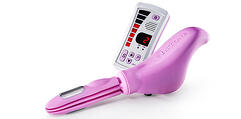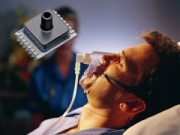 When designing a new product, looking for components can be daunting. Often times, designers must decide whether to purchase an off-the-shelf pressure sensor or design their own. This post helps clarify the criteria designers can apply when making this important decision.
When designing a new product, looking for components can be daunting. Often times, designers must decide whether to purchase an off-the-shelf pressure sensor or design their own. This post helps clarify the criteria designers can apply when making this important decision.
- What do I need from the total SYSTEM perspective? Look at the overall product by reviewing total performance requirements, the market and applications. How does this affect component selection?
- How quickly will begin sellingyour product?
- What skills do you have within your organization? What skills do you need to outsource? For example, do you have electrical and mechanical engineering skills residing within your organization? If you do, are they accessible and available for design assistance? If you need to look elsewhere, do you have a qualified resource to utilize?
- Do you have the equipment necessary to calibrate your own transducer? Typical equipment needed are temperature, pressure and humidity tools to modify the environment for calibration. Are there people available to calibrate your designed sensor?
- There are additional logistical issues to consider. For instance, what is your annual requirement of sensors? What is your time-to-market and cost targets? Where are you manufacturing? Are there any proprietary issues to consider? How many sources do you need?
By reviewing these questions, the path to deciding between make versus buy becomes much clearer. You should buy a complete transducer if you are resource-limited and have a fast-time to market requirement. Lower volumes typically under 25,000 sensors per year do not usually warrant the investment in making your own transducer. Above this quantity, return on investment on internal resources is improved and may be something to consider.
Let's take a look at a specific example by evaluating the following situation.
An application has a requirement for a calibrated, temperature-compensated pressure sensor that measures up to 30 psi. An amplified, off the shelf solution has a cost of between $6-7 each at 1,000 pieces, with a 1.5% to 1.8% accuracy over a broad temperature range. A fully packaged solution also translates into fewer parts to buy and stock.
To create the same transducer internally, the cost of an unamplified, uncalibrated pressure sensor plus additional op amps and signal conditioning to calibrate for span and off-set would cost in parts approximately $2-3, not including assembly labor and calibration time. Perhaps your accuracy requirements are not as stringent as 1.8% over a wide temperature range or there are packaging issues to consider. Another consideration to think about, if you are utilizing a contract manufacturer, there are typically assembly charges per component so the additional insertion of perhaps 6 components could affect assembly costs.
If your volumes are very high, investment in automated, more sophisticated calibration equipment can reduce labor time and costs and have an attractive return on investment.
Our team of experts combined with a broad selection of pressure sensors (both unamplified and fully packaged) and signal conditioning parts can guide you through this process. Our huge offering ensures that a solution can be found for you, regardless if you make or buy.
To get started, the best use of your time is to take advantage of the Sensor Selection Tool. We can then provide you with informed, detailed options for your consideration at no obligation to you. We view our role as a design resource to find you an optimal solution for your design.
Access the Sensor Selector Tool here
Review our Transducer Design Guide which includes typically sensor elements and signal conditioning for making your own pressure transducer.
 Selecting a pressure sensor for your application sounds simple, but with the huge amount and range of performance options, it's easy to get overwhelmed with what the best model is for your application.
Selecting a pressure sensor for your application sounds simple, but with the huge amount and range of performance options, it's easy to get overwhelmed with what the best model is for your application.


 In response to this problem, InControl Medical created InTone, which combines electrical muscle stimulation and biofeedback to create a non-invasive home-use solution offering more comfort, better tracking, and thus improved results for patients. The patented probe, shown below, contains a small pressure sensor that measures the change in pressure inside the probe when the muscle contracts against it. This data is tracked in the handheld control unit that acts as a portable therapist, guiding the patient with visual and audible instructions to ensure exercises are done correctly. Precise gains in pelvic floor muscle strength are documented in one one-hundredth of a pound per square inch. Each session is date stamped and weekly averages are calculated to compare against previous weeks, thus allowing health care providers to follow the patient's progress.
In response to this problem, InControl Medical created InTone, which combines electrical muscle stimulation and biofeedback to create a non-invasive home-use solution offering more comfort, better tracking, and thus improved results for patients. The patented probe, shown below, contains a small pressure sensor that measures the change in pressure inside the probe when the muscle contracts against it. This data is tracked in the handheld control unit that acts as a portable therapist, guiding the patient with visual and audible instructions to ensure exercises are done correctly. Precise gains in pelvic floor muscle strength are documented in one one-hundredth of a pound per square inch. Each session is date stamped and weekly averages are calculated to compare against previous weeks, thus allowing health care providers to follow the patient's progress.

 When designing a new product, looking for components can be daunting. Often times, designers must decide whether to purchase an off-the-shelf pressure sensor or design their own. This post helps clarify the criteria designers can apply when making this important decision.
When designing a new product, looking for components can be daunting. Often times, designers must decide whether to purchase an off-the-shelf pressure sensor or design their own. This post helps clarify the criteria designers can apply when making this important decision. We recently read a press release by a research company discussing pressure sensors and MEMS. We found the article to be very interesting and thought we would share some key points:
We recently read a press release by a research company discussing pressure sensors and MEMS. We found the article to be very interesting and thought we would share some key points:

 We have updated our medical applications area with the latest pressure sensor products. The goal of this section is to provide you with a quick and easy way to find sensors by application. Pressure sensors are becoming increasingly important in medical equipment. The latest technologies available give designers flexibility in how sensors are used. Lower tolerance sensors combined with sensor signal conditioning lets medical equipment designers choose more cost effective solutions while tailoring a sensor to their specific needs.
We have updated our medical applications area with the latest pressure sensor products. The goal of this section is to provide you with a quick and easy way to find sensors by application. Pressure sensors are becoming increasingly important in medical equipment. The latest technologies available give designers flexibility in how sensors are used. Lower tolerance sensors combined with sensor signal conditioning lets medical equipment designers choose more cost effective solutions while tailoring a sensor to their specific needs.